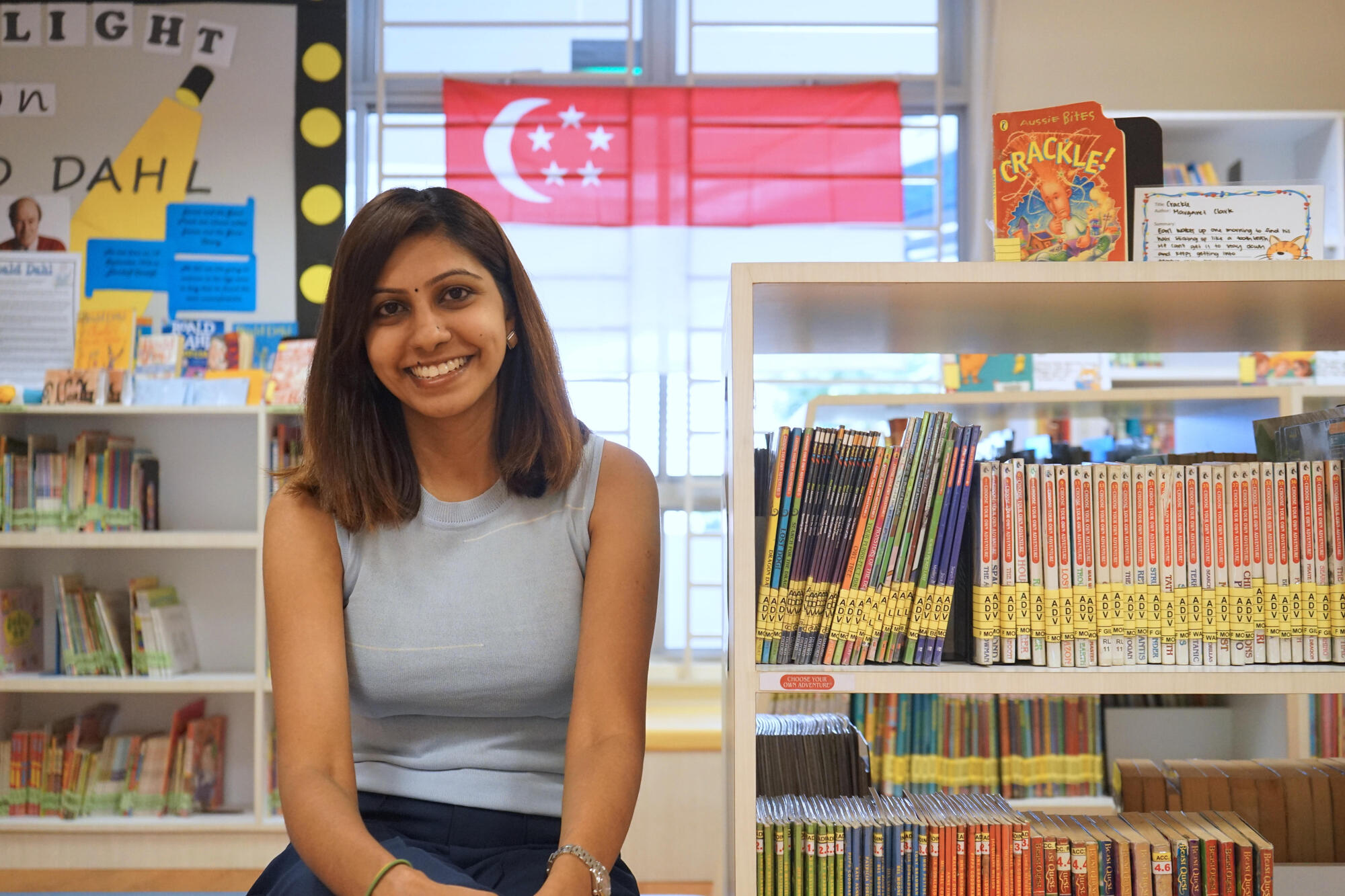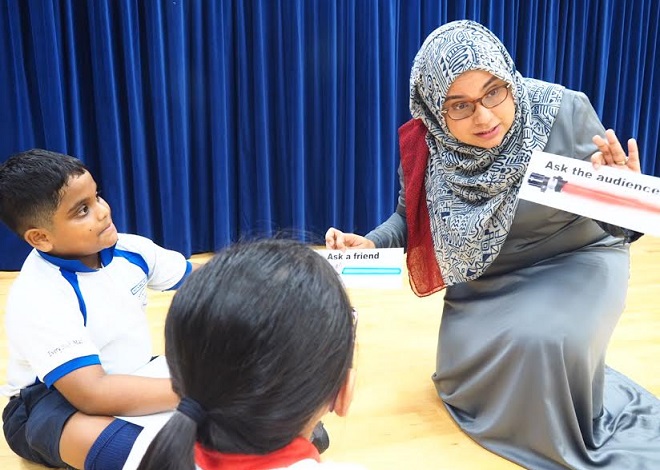Anushia-Devi D/O Balachandran, Teck Ghee Primary School, Outstanding Youth in Education Award 2020 Recipient
Walking in Someone Else’s Shoes
What is ageing like? My Primary 6 students can tell me in detail because they live — in a short while — with the problems of the elderly.
Every year, my team and I set up an ageing simulation exercise for all Primary 6 students in school. Students had to complete five activities.
These included walking around with plastic wrap wound around their knees and elbows, and weights around their ankles. Even if they wanted to, they were not be able to walk at their usual speed. For five minutes, they experienced what it is like to walk in the shoes of an elderly person.
Next, what was it like to look through the eyes of a person with cataract? Students wore goggles smeared with Vaseline. They also had to thread a needle while wearing gloves. This was to simulate the sensory loss that comes with ageing.
We ended by watching a short film about dementia.
At the end of the session, I asked my students to reflect on their experiences. One said, “It is not easy to be old.” Another shared, “Now I know why my grandmother cannot use the iPad as easily as me.”
Another exercise I had organised was the Blindfold Lunch. It was to help students understand issues faced by the visually impaired.
Students wearing blindfolds were asked to eat chicken rice. It was not easy at all as they discovered. Some tried to eat with the back of the fork and spoon. Others could not locate the chicken pieces and ate mostly rice.
The activity lasted just a few minutes, but students experienced the struggle that the visually impaired go through every day. Many shared that they could not imagine what life would be like without their eyesight till this experience.
Giving Back to the Community
Developing empathy must be more than an academic exercise.
That is why I created these simulation exercises, which are part of a six-year Values-In-Action plan. Through this, students have the chance to explore the needs of different groups of people. It culminates in Teck Ghee Primary “Gives Back Day”, which I initiated, as I hope to provide an opportunity for students to contribute to the community.
Last year, Primary 2 students partnered SPCA to teach Primary 1 students how to be responsible pet owners and conducted talks for them. They also spoke out against animal abuse.
The Primary 4 students created digital posters to encourage residents to keep the lifts clean. They partnered with Ang Mo Kio Town Council to display these posters at the digital lift panels situated in HDB blocks in the school’s neighbourhood.
Primary 5 and 6 students conducted basic coding and clay modelling workshops for the elderly at nearby senior activity centres. These were skills that they had picked up in school and had wanted to share with the elderly.
“Gives Back Day” is truly a day that shows that my students, no matter how young, can rise to the occasion and do their part to help the community.
Bringing Every Child into the Fold
I also saw the need to promote a culture of kindness and acceptance within the school.
When I met Sam* in Primary 5, he was a very angry boy. He was known for having sudden outbursts and meltdowns in class. I wanted to help him. But first, I needed to find out what triggered those outbursts.
I spoke to him and also roped in the school’s Allied Educator. Initially, he was resistant. He came from a troubled family background, which made him distrustful of people.
Over time, once he was convinced that I genuinely wanted to help him, he opened up. When I knew what his struggles were, I could offer ways to help him better cope with his situation. He is now in secondary school and fitting in well.
This incident brought home to me the fact that students express their needs in different ways. We need to learn to identify these needs, so we can plan how to reach out to them.
I brought together teachers in my school who are trained in special needs so that they could use their expertise to help at-risk students.
We created a “teacher buddy” system. These teachers who are trained in special needs took on the role of a mentor to students, who needed support. This lasted throughout their primary school years. The students have one-on-one sessions with their teacher buddies to talk about challenges they face and ways to resolve them.
Over time, these “teacher buddies” built a strong and deep relationship with these children. They understood their trigger points, coping mechanisms and their circle of friends, and this enabled them to help these students in ways that will truly benefit them.
Once every semester, we held a gathering for these students, who required more support. At these sessions, they played games, learnt to make friends and enlarged their circle of support.
At the end of the day, I want my students to know that the school is a safe space. There is an ever-ready village of people who are willing to fight alongside them, and they never have to feel alone. This is our school culture — where teachers and students help one another feel accepted and included. By experiencing this, I hope my students will also show similar care and concern for others in the larger community.
*Name has been changed to protect the student’s identity.




.jpg)
.jpg)
